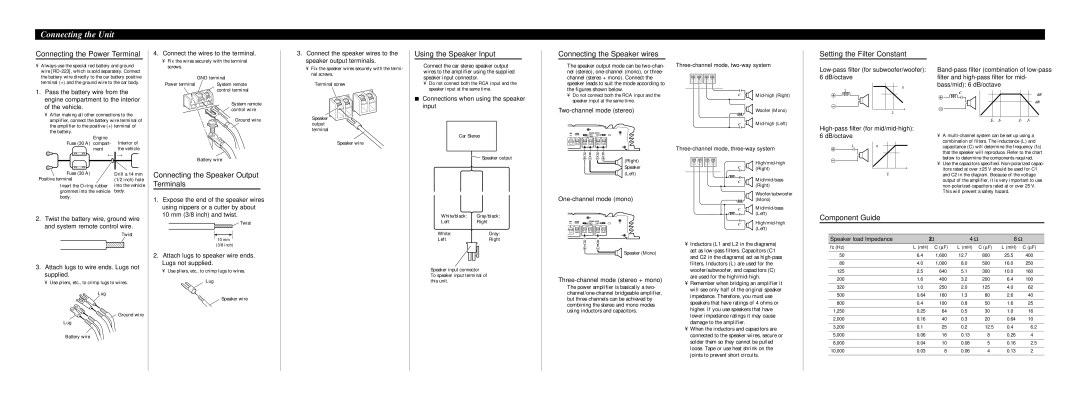GM-3000T specifications
The Pioneer GM-3000T is an advanced car amplifier designed to enhance audio performance in automotive sound systems. It is recognized for its powerful output, reliability, and range of features that cater to both casual listeners and audio enthusiasts.One of the standout features of the GM-3000T is its robust power output. The amplifier is capable of delivering a substantial amount of wattage, which ensures that audio systems can produce clear and dynamic sound even at high volumes. This makes it an ideal choice for drivers who enjoy listening to music with deep bass and crisp highs.
In terms of design, the GM-3000T boasts a sleek and durable construction. Pioneer's engineering team has focused on creating a compact yet efficient product that fits easily in various vehicle configurations. The heat dissipation features are well thought out, ensuring that the amplifier remains functional even during extended periods of use, preventing overheating and maintaining stable performance.
The GM-3000T incorporates advanced circuitry designed to minimize distortion. This ensures that listeners receive clean audio quality, which is especially important for those who prioritize sound fidelity. The amplifier’s low-noise operation further contributes to an enhanced listening experience, allowing subtle details in the music to shine through.
This amplifier also supports various installation options, making it versatile for different audio setups. It can be integrated with both factory and aftermarket head units, allowing users to customize their sound systems to their liking. The amplifier includes features such as adjustable gain control and high-pass/low-pass filters, enabling precise tuning for various types of speakers and subwoofers.
Another key aspect of the GM-3000T is its compatibility with Pioneer’s range of products, ensuring seamless integration when paired with other Pioneer components.
The GM-3000T allows for easy connection and installation, which is essential for users who may not be experts in audio setup. The user-friendly design is complemented by comprehensive instruction manuals that guide users through the installation process.
In summary, the Pioneer GM-3000T stands out in the automotive audio market due to its powerful performance, sophisticated technology, and user-friendly features. It represents a solid choice for anyone looking to upgrade their vehicle's sound system, delivering a listening experience that combines quality, reliability, and flexibility.

